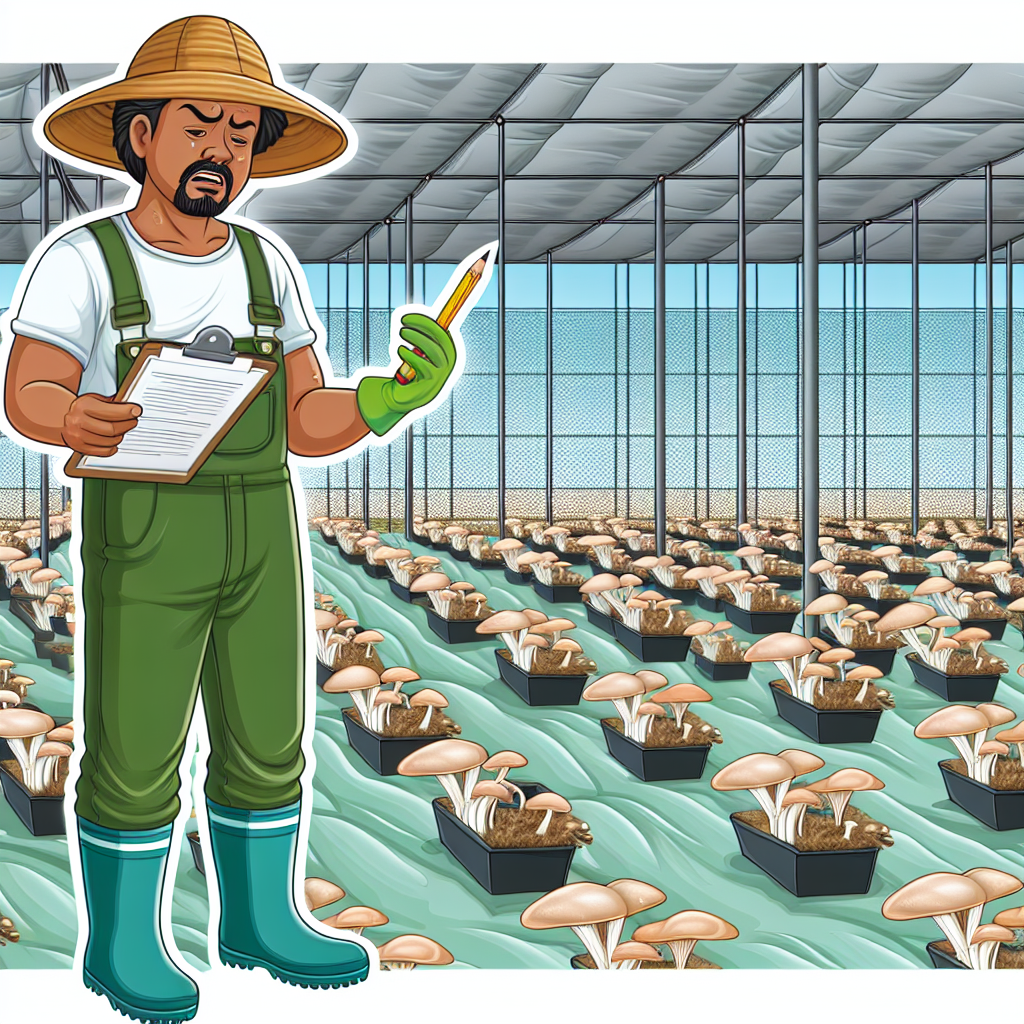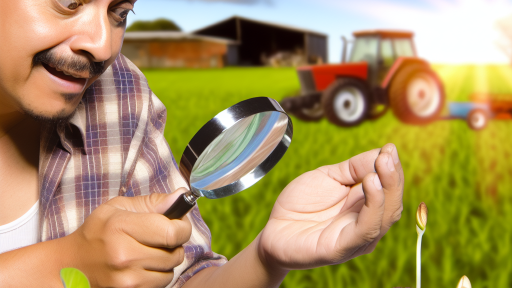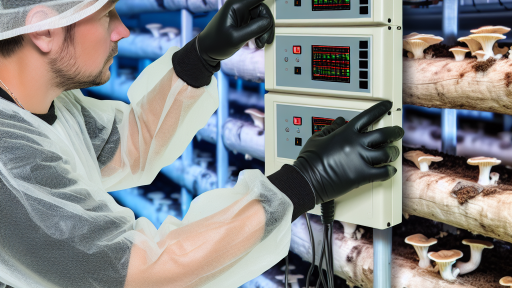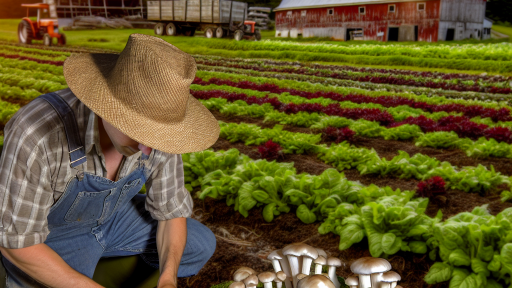Introduction to Mushroom Farming Challenges
Mushroom farming presents unique challenges that every grower faces.
These challenges can vary based on the type of mushroom and the farming method.
Understanding these issues is crucial for success in this industry.
Proper management can mitigate many of the common obstacles.
Environmental Factors
Temperature and humidity significantly affect mushroom growth.
Each mushroom species has specific environmental needs.
Ignoring these can result in poor yields or crop failure.
Growers must monitor conditions closely to ensure optimal growth.
Pest and Disease Management
Pests and diseases pose substantial risks to mushroom crops.
Common pests include mushroom flies and mites.
Effective prevention and treatment are essential to protect crops.
Establishing a pest management plan can reduce these risks.
Market Fluctuations
The mushroom market can be unpredictable and volatile.
Prices may fluctuate based on supply and demand dynamics.
Farmers must stay informed about market trends.
Transform Your Agribusiness
Unlock your farm's potential with expert advice tailored to your needs. Get actionable steps that drive real results.
Get StartedEstablishing relationships with buyers can provide stability.
Quality Control
Maintaining quality is crucial for customer satisfaction.
Variation in quality can lead to loss of consumer trust.
Identifying and addressing quality issues promptly is essential.
Implementing strict quality control measures helps maintain standards.
Resource Management
Efficient resource use can improve profitability in mushroom farming.
This includes managing substrates, water, and labor effectively.
Optimizing resources minimizes waste and reduces costs.
Investing in training for staff can enhance productivity.
Understanding Environmental Factors Affecting Mushroom Growth
Temperature Control
Mushrooms require specific temperature ranges for optimal growth.
Higher temperatures can accelerate growth but may also lead to contamination.
Maintain the ideal range for your specific mushroom type to ensure health.
Humidity Levels
Humidity plays a critical role in mushroom development.
Excess humidity can encourage mold and bacteria growth.
Conversely, too little moisture can stunt mushroom expansion.
Use hygrometers to monitor levels and adjust as necessary.
Light Exposure
Different mushroom species have varying light requirements.
Some mushrooms thrive in darkness, while others need low-light environments.
Understanding these needs helps prevent poor yield and quality.
Utilize appropriate lighting setups based on your chosen varieties.
Air Quality
Good air circulation is essential for healthy mushroom growth.
Poor ventilation can lead to stale air and high CO2 levels.
Implement fans and ventilation systems to optimize air exchange.
This practice also minimizes the risk of fungal diseases.
Showcase Your Farming Business
Publish your professional farming services profile on our blog for a one-time fee of $200 and reach a dedicated audience of farmers and agribusiness owners.
Publish Your ProfileSubstrate Management
The choice of substrate significantly influences mushroom growth.
Organic materials like straw or sawdust provide essential nutrients.
Ensure the substrate is properly sterilized to eliminate competitors.
Regularly monitor for contamination and adjust management strategies.
Common Pests and Diseases in Mushroom Cultivation
Overview of Common Pests
Pests can significantly impact mushroom farming success.
Identifying these pests early helps mitigate damage.
Common pests include fungus gnats, mites, and flies.
Each pest requires a specific management strategy.
Identifying Fungus Gnats
Fungus gnats are small, dark flies that thrive in moist conditions.
They lay eggs in the growing medium, causing root damage.
Regularly checking for adult flies assists in early detection.
Sticky traps can effectively capture these pests.
Managing Mites
Mites, particularly spider mites, can cause serious harm to mushrooms.
These pests feed on mushroom mycelium and can disrupt growth.
Effective management includes maintaining humidity levels.
Also, introducing predatory mites can reduce their population.
Dealing with Flies
Different types of flies can infest mushroom farms.
Fungus gnats and fruit flies are the most common offenders.
To control these flies, eliminate decaying organic material.
Using insect netting can prevent flies from entering the growing area.
Overview of Common Diseases
Diseases can lead to reduced yields in mushroom cultivation.
Fungal and bacterial infections are particularly concerning.
Recognizing symptoms early can help in effective treatment.
Recognizing Fungal Infections
Fungal infections often present as discolored or slimy patches.
Common fungal diseases include cobweb mold and wet bubble disease.
Maintaining proper ventilation helps prevent fungal growth.
Applying fungicides can effectively manage established infections.
Understanding Bacterial Infections
Bacterial diseases often result in mushy, rotting mushrooms.
Contamination frequently comes from poor sanitation practices.
Regularly cleaning tools and surfaces minimizes risks.
Certifying clean spawn can prevent bacterial introduction.
Preventative Measures
Prevention is crucial in managing pests and diseases.
Implementing good hygiene practices helps maintain a healthy environment.
Using high-quality spawn ensures vigorous mushroom growth.
Monitoring environmental conditions is essential for success.
Maintaining proper ventilation and humidity control can significantly reduce issues.
Delve into the Subject: Tips For Successful Vegetable Seed Saving
Nutrient Management and Soil Health in Mushroom Farming
Understanding Soil Health
Soil health is vital for successful mushroom farming.
Healthy soil supports mushroom growth and yield.
Mushrooms thrive in rich, organic matter.
Showcase Your Farming Business
Publish your professional farming services profile on our blog for a one-time fee of $200 and reach a dedicated audience of farmers and agribusiness owners.
Publish Your ProfileMoreover, soil structure influences water retention.
Essential Nutrients for Mushrooms
Mushrooms require specific nutrients for optimal growth.
Key nutrients include nitrogen, phosphorus, and potassium.
Organic materials often provide these essential elements.
Moreover, calcium and magnesium contribute to healthy development.
Challenges in Nutrient Management
One challenge is nutrient depletion in soil over time.
Continuous cropping can lead to nutrient imbalance.
Additionally, chemical fertilizers may harm soil health.
They can disrupt beneficial microbial activity.
Implementing Sustainable Practices
Sustainable practices enhance nutrient management.
Use composting to recycle organic waste effectively.
Crop rotation can restore soil nutrients.
Furthermore, cover crops prevent soil erosion.
Monitoring Soil Health
Regular soil testing helps monitor nutrient levels.
Testing allows farmers to adjust nutrient inputs wisely.
Additionally, observing mushroom growth gives insights into soil health.
Healthy mushrooms indicate balanced nutrient levels.
Collaborating with Experts
Consulting with agronomists can enhance soil management.
Experts provide valuable recommendations tailored to specific needs.
Moreover, joining local farming groups can increase knowledge sharing.
Collaboration leads to effective problem-solving strategies.
Delve into the Subject: Sustainable Water Practices in Organic Farming
The Importance of Proper Ventilation and Humidity Control
Understanding the Role of Ventilation
Proper ventilation is essential for successful mushroom farming.
It ensures fresh air circulates throughout the growing environment.
This circulation helps prevent the buildup of harmful gases.
Furthermore, it reduces the risk of contamination from pests and pathogens.
Without adequate ventilation, mushrooms can become stressed and unhealthy.
Consequently, growers may experience lower yields and poor quality product.
Humidity Control: A Critical Factor
Humidity levels have a direct impact on mushroom growth.
High humidity promotes optimal mycelial growth and fruiting body formation.
However, excessive moisture can lead to disease and decay.
Thus, maintaining the right humidity percentage is crucial.
Growers should regularly monitor humidity levels using reliable instruments.
In general, mushrooms thrive in environments of 80-90% relative humidity.
Tools for Effective Management
Investing in proper equipment enhances control over ventilation and humidity.
- Use exhaust fans to expel stale air from the growing area.
- Incorporate humidifiers to maintain desired moisture levels.
- Install thermohygrometers to monitor temperature and humidity.
These tools streamline the cultivation process and optimize mushroom quality.
Implementing Best Practices
Regular maintenance of equipment is essential for consistent performance.
Schedule system checks to ensure all components function correctly.
Additionally, growers should create a ventilation strategy tailored to their setup.
Adjust airflow patterns based on seasonal changes and crop stages.
Showcase Your Farming Business
Publish your professional farming services profile on our blog for a one-time fee of $200 and reach a dedicated audience of farmers and agribusiness owners.
Publish Your ProfileLastly, train staff on the importance of these controls in mushroom farming.
Discover More: Benefits Of Seed Saving For Sustainable Agriculture

Challenges in Harvesting and Post-Harvest Management
Identifying Common Harvesting Issues
Mushroom harvesting often presents various challenges.
Understanding these challenges can aid successful farming.
One major issue is timing the harvest correctly.
Harvesting too early affects quality and yield.
Conversely, waiting too long can lead to spoilage.
Additionally, labor shortages complicate the harvesting process.
This absence of available workers can delay harvests.
Improper techniques also lead to damage during picking.
For example, breaking stems can spoil product quality.
Post-Harvest Management Concerns
Post-harvest management is equally important in mushroom farming.
One key aspect is maintaining proper storage conditions.
Mushrooms require specific temperature and humidity levels.
Failing to provide these conditions can lead to waste.
Moreover, contamination is a significant concern in storage.
Keeping storage areas clean reduces this risk considerably.
Another issue is transportation logistics post-harvest.
Improper handling during transportation may affect quality.
Solutions to Overcome Harvesting Issues
Aside from identifying challenges, implementing solutions is crucial.
Investing in training for workers enhances their efficiency.
Improvement in harvesting techniques can minimize damage.
Employing a suitable harvest schedule maximizes yield.
Utilizing technology can help monitor ripeness as well.
Enhancing Post-Harvest Practices
Improving post-harvest management is vital for success.
Regular maintenance of storage facilities preserves quality.
Implementing strict hygiene protocols can minimize contamination.
Careful planning of transport routes optimizes efficiency.
Using refrigeration during transport helps extend shelf life.
Learn More: Low-Maintenance Edible Landscaping Ideas
Strategies for Improving Yield and Quality of Mushrooms
Enhancing Environmental Conditions
Controlling temperature is essential for successful mushroom cultivation.
Maintain a stable environment to optimize growth rates.
Humidity levels significantly affect mushroom quality and yield.
Regularly monitor moisture to ensure proper hydration of substrates.
Light exposure, although minimal, influences mushroom formation.
Selecting the Right Substrate
The substrate type must match the mushroom species being cultivated.
Consider using a combination of materials for the best results.
Common substrates include straw, sawdust, and coffee grounds.
Proper pasteurization of the substrate is crucial to eliminate pathogens.
Implementing Best Cultivation Practices
Ensure you follow a clean and sterile procedure during mushroom cultivation.
Showcase Your Farming Business
Publish your professional farming services profile on our blog for a one-time fee of $200 and reach a dedicated audience of farmers and agribusiness owners.
Publish Your ProfileUse gloves and disinfect tools to minimize contamination risks.
Train staff on the importance of hygiene in mushroom farming.
Regular inspections help identify issues before they escalate.
Utilizing Technology
Incorporate sensors to monitor environmental variables in real time.
Automating irrigation can help maintain optimal moisture levels.
Use software tools to track growth and yield data effectively.
Advanced technology can contribute to increased efficiency and productivity.
Engaging in Continuous Learning and Research
Stay updated on the latest developments in mushroom farming.
Join agricultural workshops and webinars to enhance your skills.
Networking with other mushroom farmers fosters knowledge exchange.
Conducting experiments can uncover new techniques for improvement.
Technological Innovations in Mushroom Farming Solutions
Introduction to Technology in Mushroom Farming
Technology plays a vital role in modern mushroom farming.
It helps farmers overcome common challenges.
Additionally, it improves efficiency and yields.
Automated Climate Control Systems
Climate control is crucial for mushroom growth.
Automated systems monitor temperature and humidity.
These systems adjust conditions to optimize growth.
For example, GreenTech Innovations offers advanced climate management solutions.
Farmers can reduce resource waste through effective automation.
Smart Sensors and IoT Solutions
Internet of Things (IoT) technology is transforming mushroom farming.
Smart sensors provide real-time data on crop needs.
Farmers can track moisture levels, temperature, and CO2 levels remotely.
This data-driven approach promotes higher productivity.
Solutions from companies like AgriTech Solutions enhance farm management.
Biotechnology in Crop Improvement
Biotechnology helps develop superior mushroom varieties.
Genetic modification can enhance disease resistance.
Moreover, it can improve yield and growth rates.
Research institutes are actively developing these technologies.
As a result, farmers face fewer crop failures due to pests.
Efficient Substrate Preparation Technologies
Substrate preparation affects mushroom cultivation directly.
Innovative systems streamline substrate mixing and pasteurization.
These processes ensure optimal nutrient availability.
Technologies from companies like BioSubstrate Tech reduce preparation time.
This efficiency translates into higher profitability for farmers.
Data Analytics for Enhanced Decision Making
Data analytics is becoming increasingly important in agriculture.
Farmers use this technology to make informed choices.
They can analyze market trends and crop performance.
Data-driven decisions improve overall farm outcomes.
Platforms such as FarmSight provide valuable analytical insights.
Sustainable Practices through Technology
Many technologies promote sustainable farming practices.
Showcase Your Farming Business
Publish your professional farming services profile on our blog for a one-time fee of $200 and reach a dedicated audience of farmers and agribusiness owners.
Publish Your ProfileFor instance, automated irrigation systems reduce water use.
Additionally, renewable energy sources power farming operations.
These innovations align with environmental goals.
Farmers can build a positive reputation through sustainability.
Additional Resources
Marc Amante – Small Business Owner/Farmer – Kenwood Corners …
Adaptation and development pathways for different types of farmers …




